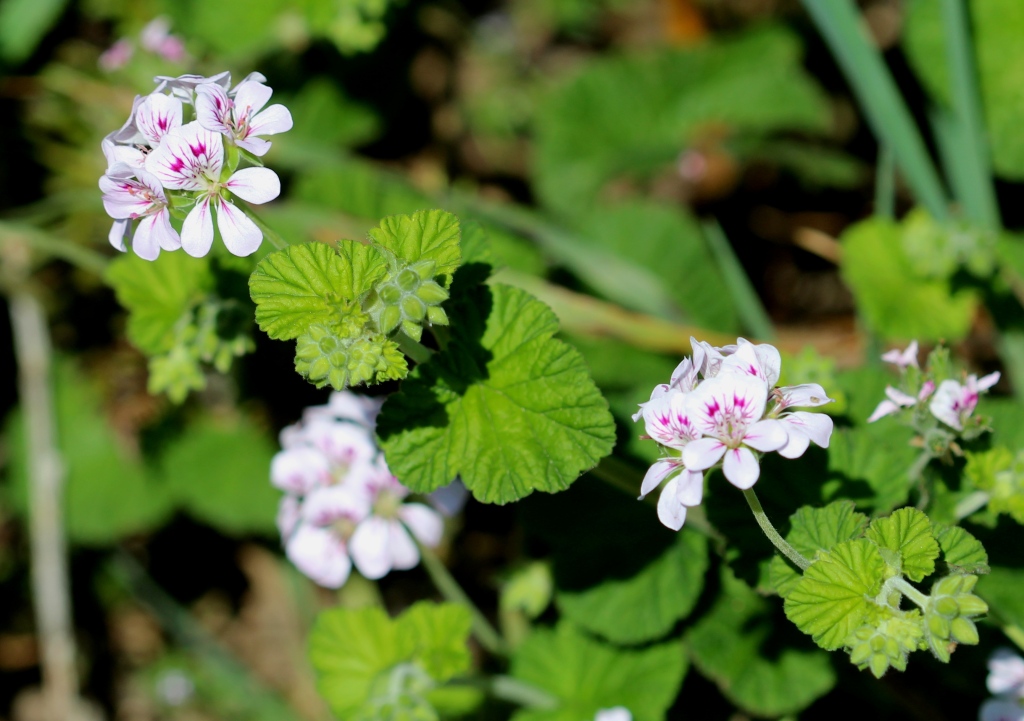Pelargonium australe
Willd. Austral Stork's-billAscending to decumbent perennial to 50(–80) cm high; stems, peduncles and pedicels hirsute to villous with eglandular hairs and sometimes some sessile or shortly stalked glands; taproot often fleshy. Leaves opposite, lamina ovate to orbicular, to 9(–18) cm long and wide, usually cordate at base, entire or shallowly 5–7-lobed, pilose to softly hirsute or villous, rarely glabrescent, margins crenate, often undulate; petiole to 8(–13) cm long. Umbels 6–12-flowered; peduncles to 10 cm long; pedicels 3–15 mm long; sepals ovate, 3–7 mm long, acute, sparsely to densely villous (sometimes with some shortly stalked or sessile glands); sepal spur 1–4(–8) mm long; petals 6–10 mm long, pink, the upper pair usually veined or blotched darker; fertile stamens 7 or 8. Fruit 8–15 mm long; mericarps pilose to villous. Flowers Oct.–Mar.
LoM, MuM, Wim, GleP, Brid, VVP, VRiv, RobP, MuF, GipP, OtP, WaP, Gold, CVU, GGr, DunT, NIS, EGL, EGU, WPro, HSF, HNF, OtR, Strz, MonT, HFE, VAlp. All states except NT. Widespread and locally common through much of the State, particularly on rocky hills and sandy coastlines and lake margins.
A variable species possibly including a number of distinct entities. Plants occurring on and near the coast east of Wilsons Promontory are noteworthy in having very densely villous vegetative parts, leaves up to c. 18 cm diam, and are often particularly floriferous.
Smith, L.P.; Walsh, N.G. (1999). Pelargonium. In: Walsh, N.G.; Entwisle, T.J., Flora of Victoria Vol. 4, Cornaceae to Asteraceae, pp. 233–236. Inkata Press, Melbourne.
 Spinning
Spinning


